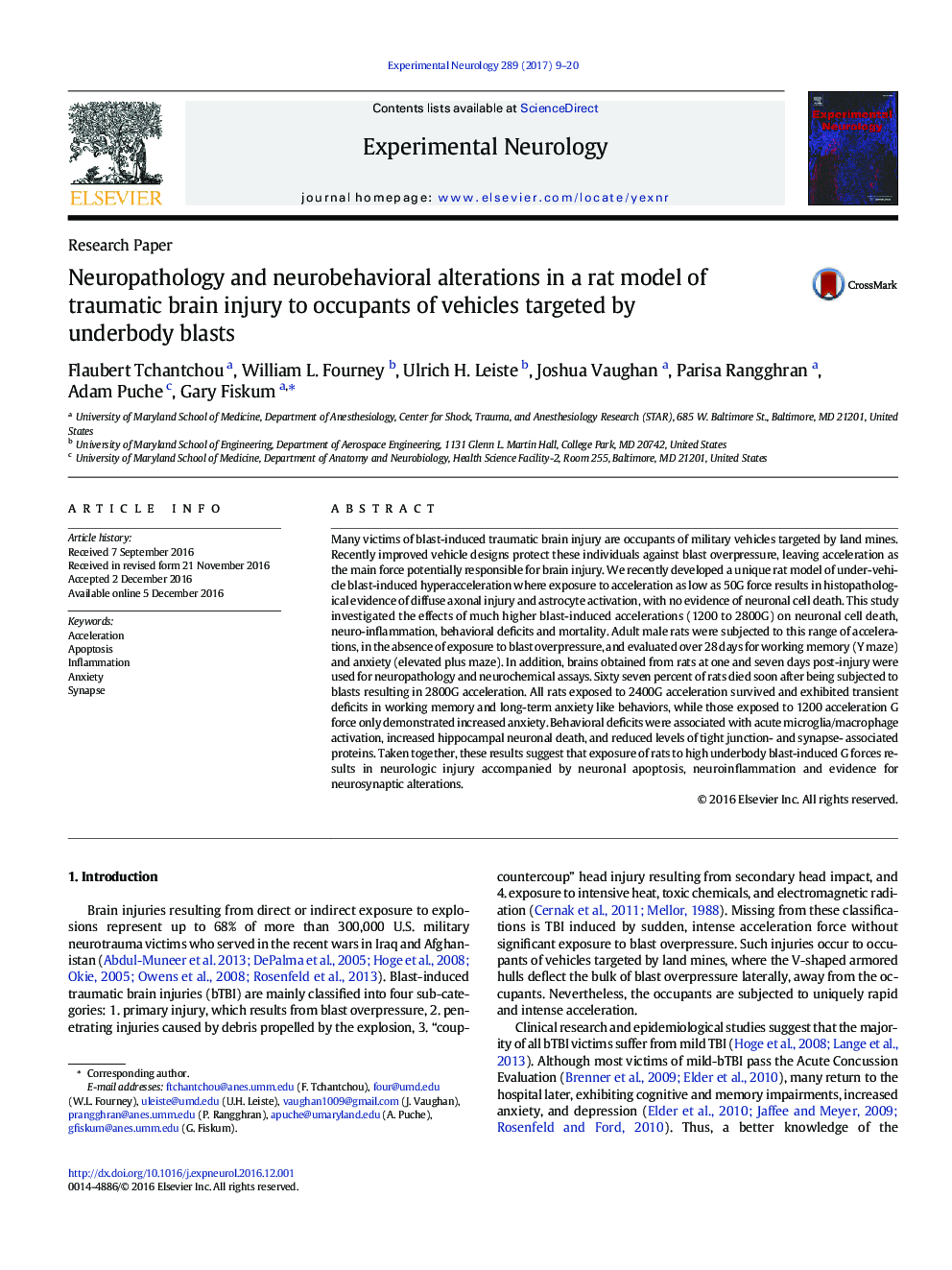| کد مقاله | کد نشریه | سال انتشار | مقاله انگلیسی | نسخه تمام متن |
|---|---|---|---|---|
| 5629346 | 1580150 | 2017 | 12 صفحه PDF | دانلود رایگان |
- Rat model of TBI specially relevant to occupants of vehicles targeted by land mines.
- Evidence of chronic anxiety-like behavior in rats after exposure to underbody blast.
- Presence of perivascular inflammation and hippocampal cell death 24 h post-blast.
- Evidence of BBB disruption and loss of synaptic proteins within 24 h post- blast.
Many victims of blast-induced traumatic brain injury are occupants of military vehicles targeted by land mines. Recently improved vehicle designs protect these individuals against blast overpressure, leaving acceleration as the main force potentially responsible for brain injury. We recently developed a unique rat model of under-vehicle blast-induced hyperacceleration where exposure to acceleration as low as 50G force results in histopathological evidence of diffuse axonal injury and astrocyte activation, with no evidence of neuronal cell death. This study investigated the effects of much higher blast-induced accelerations (1200 to 2800G) on neuronal cell death, neuro-inflammation, behavioral deficits and mortality. Adult male rats were subjected to this range of accelerations, in the absence of exposure to blast overpressure, and evaluated over 28Â days for working memory (Y maze) and anxiety (elevated plus maze). In addition, brains obtained from rats at one and seven days post-injury were used for neuropathology and neurochemical assays. Sixty seven percent of rats died soon after being subjected to blasts resulting in 2800G acceleration. All rats exposed to 2400G acceleration survived and exhibited transient deficits in working memory and long-term anxiety like behaviors, while those exposed to 1200 acceleration G force only demonstrated increased anxiety. Behavioral deficits were associated with acute microglia/macrophage activation, increased hippocampal neuronal death, and reduced levels of tight junction- and synapse- associated proteins. Taken together, these results suggest that exposure of rats to high underbody blast-induced G forces results in neurologic injury accompanied by neuronal apoptosis, neuroinflammation and evidence for neurosynaptic alterations.
Journal: Experimental Neurology - Volume 289, March 2017, Pages 9-20
